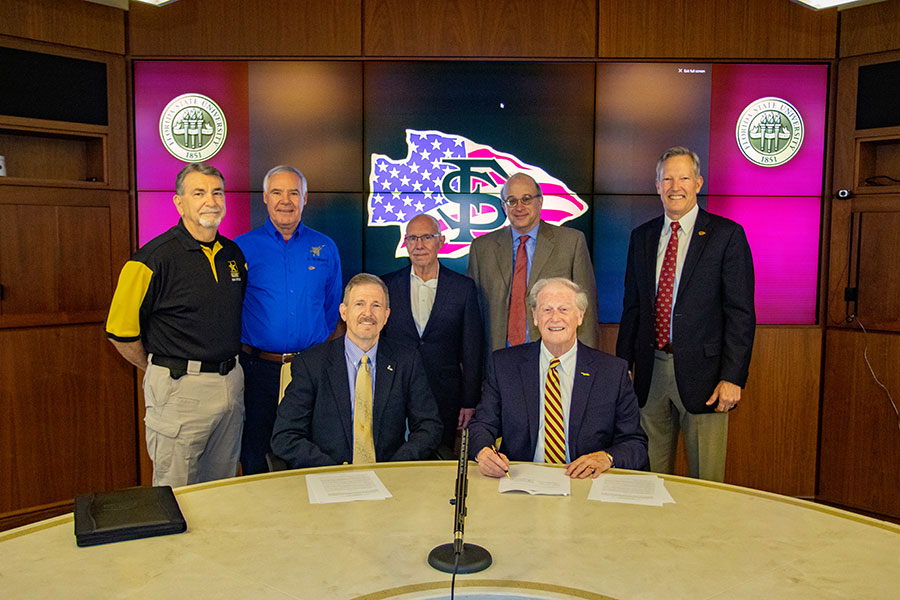The efforts of a Tallahassee nonprofit to commemorate a major World War II training base recently took a step forward thanks to Florida State University.
FSU President John Thrasher signed a Memorandum of Understanding Friday to allow the Dale Mabry Army Air Field Museum to take possession of a historic residential structure that was once part of Dale Mabry Army Air Field (DMAAF) but became part of the university’s campus in 1947.
“Florida State is honored to be part of this initiative to preserve an important part of our local history,” Thrasher said. “Dale Mabry Army Air Field played a pivotal role in our nation’s armed forces training during World War II.”
Thrasher said that it is likely some of the men who trained at Dale Mabry later enrolled at FSU and were instrumental in Florida State’s transition in 1947 to a coed university.
The structure, known simply as Building 264 on FSU’s campus, was part of Mabry Heights, a housing complex for 100 military families assigned to the base. The building will become part of the museum, which will honor the thousands of fighter pilots who trained at the base in the 1940s and, for a time, converted Tallahassee into a military town.

Tommy Bowermeister; Dave Irwin, Associate Vice President of Facilities; Kurt Piehler, associate professor of history; and Billy Francis, director of the Student Veterans Center.
Board chair and CEO Chuck Wells signed the agreement on behalf of the Dale Mabry Army Air Field Museum.
“Building 264 is among the few Dale Mabry relics that still exist,” Wells said. “Another is the end of the training base’s northwest-southeast runway, which lies adjacent to the present-day James Messer Sports Complex.”
The museum will be located near Tallahassee Community College, which is situated on a significant portion of the land the DMAAF once occupied. The building will eventually be relocated to a 3-acre tract designated by Tallahassee Community College as the museum site through a separate MOU.
“We want to create a complex of buildings and structures that will allow visitors to go back in time to know what it was like in Tallahassee during World War II and to see the efforts on the home front and the war front that allowed victory over tyranny,” Wells said.
More than 8,000 pilots trained at DMAAF, including British, French and Chinese flyers, as well as the famed Tuskegee Airmen, according to Wells. The base expanded Tallahassee’s population by 25 percent and created jobs for 800 civilians.




